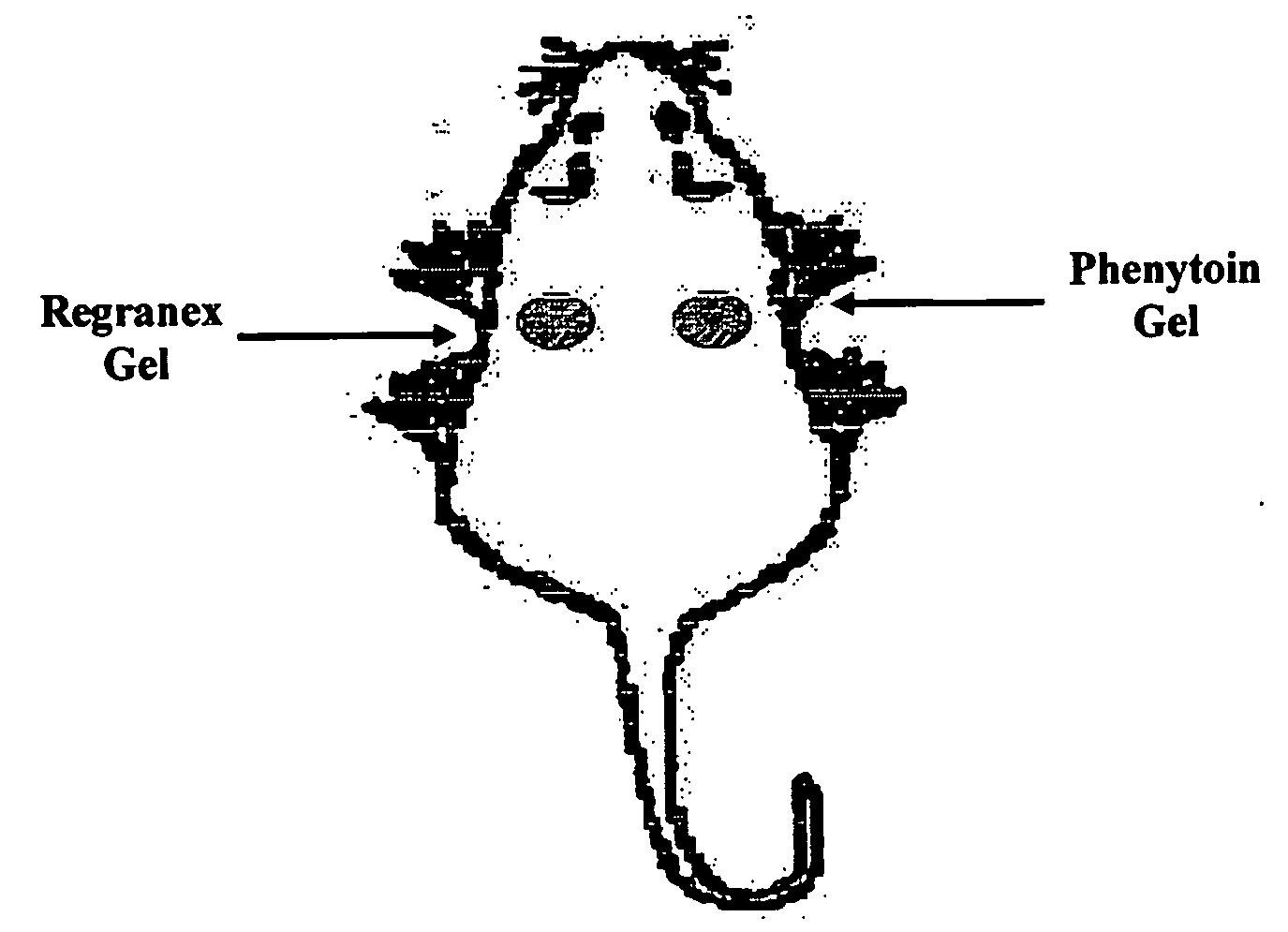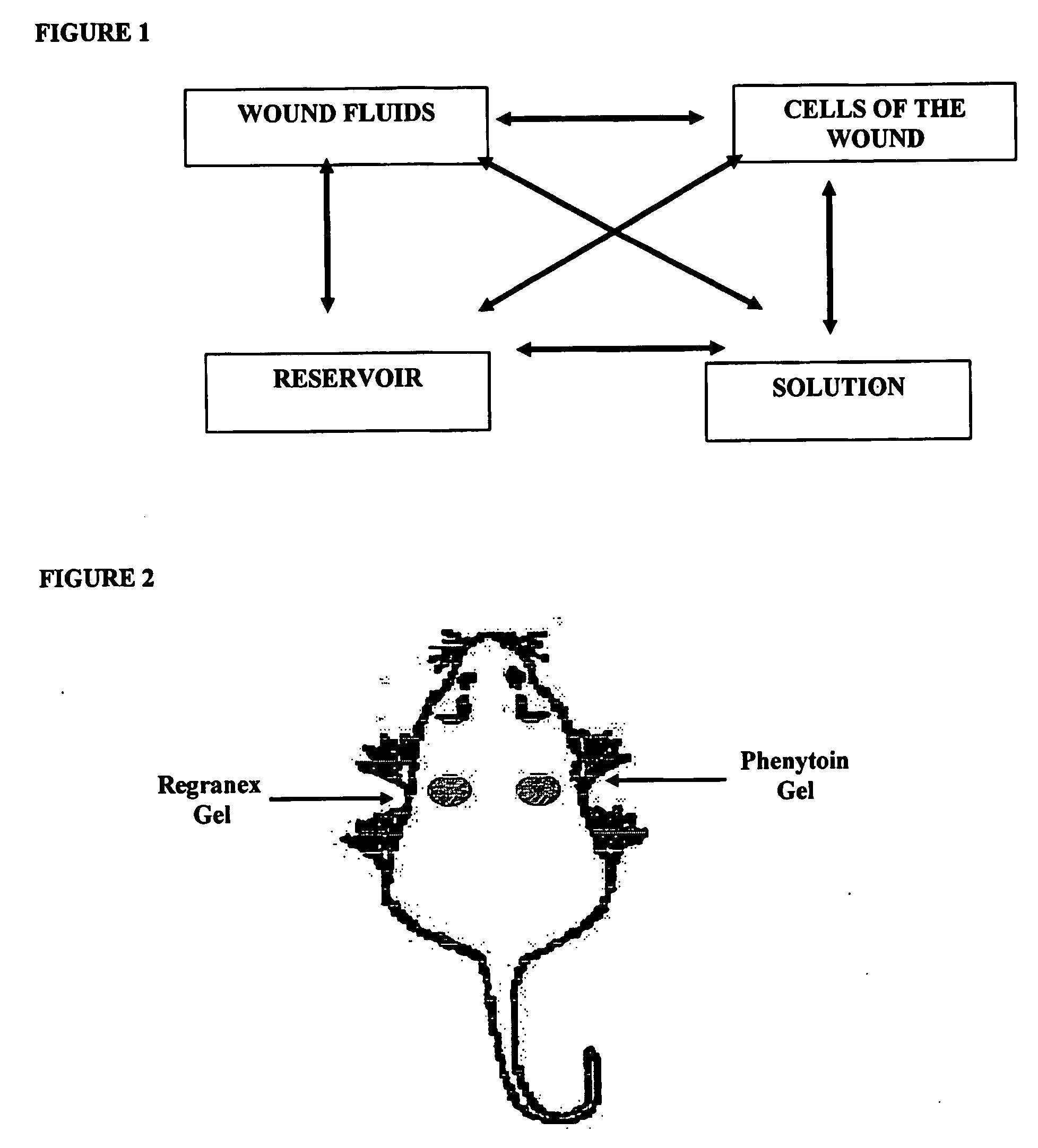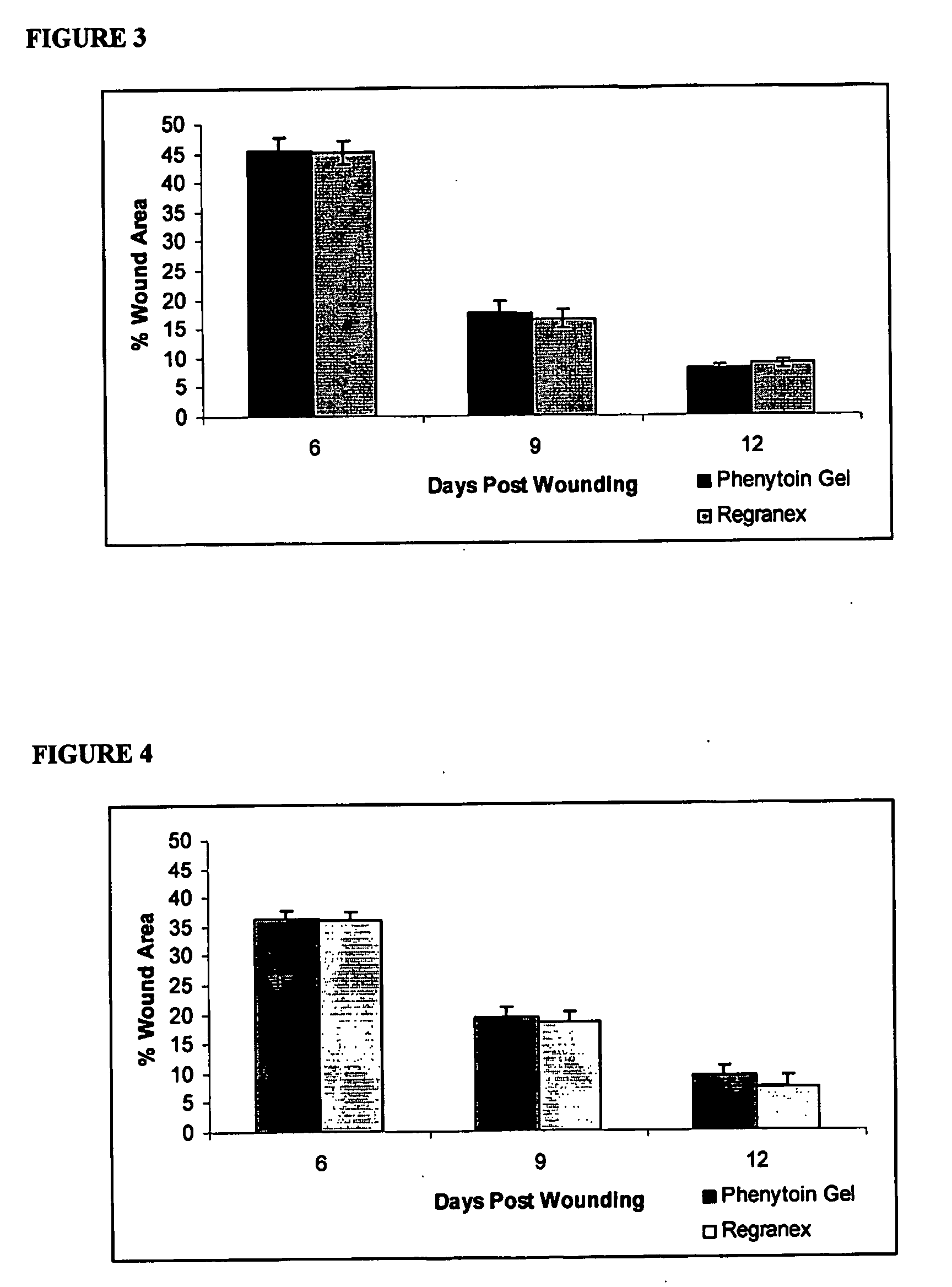Phenytoin Formulations, and Uses Thereof in Wound Healing
a technology of phenyloin and formulation, which is applied in the field of formulations of phenyloin, can solve the problems of not teaching how to use phenyloin in a suitable pharmaceutical composition, and the inability to expose wound tissue to this ph, so as to improve wound healing in diabetic animals and reduce the area of wounds
- Summary
- Abstract
- Description
- Claims
- Application Information
AI Technical Summary
Benefits of technology
Problems solved by technology
Method used
Image
Examples
example 1
Extended-Release Phenyloin Gel
[0053]Carbomer 974 PNF 1 g is added to approximately 80 g deionised water. Following complete addition of Carbomer, the preparation is mixed for 30 minutes. Phenyloin sodium 5 g is gradually added while mixing. The gel thickens. The gel is made up to 100 g with deionised water, with mixing. The pH is adjusted to 7.4 with sodium hydroxide.
example 2
Extended-Release Phenyloin Gel
[0054]Hydroxypropyl-β-Cyclodextrin 30 g is dissolved in approximately 60 g deionised water with stirring. Phenyloin sodium 1 g is added slowly to form a suspension. Carbomer 974 PNF 1 g is gradually added with mixing at 1500 rpm. The gel is made up to 100 g with deionised water, with mixing. The pH is adjusted to 7.4 with sodium hydroxide.
example 3
Efficacy Model
[0055]A rat dorsal wound model as described by DaCosta et al. (Surgery 123(3) 287-93 1998) was employed. Wounds were treated by insertion of aliquots (0.2 g) of either the phenyloin-containing gel described in Example 2 above, or a gel manufactured without phenyloin. Ten days afterwards, the integrity of the wounds were examined and compared. The beneficial effects of the invention were manifested by an increase in wound tensile strength of approximately 30%, when compared with the inactive treatment, accompanied by increased amounts of hydroxyproline, which is a marker of collagen deposition.
PUM
| Property | Measurement | Unit |
|---|---|---|
| w/w | aaaaa | aaaaa |
| diameter | aaaaa | aaaaa |
| stability | aaaaa | aaaaa |
Abstract
Description
Claims
Application Information
 Login to View More
Login to View More - R&D
- Intellectual Property
- Life Sciences
- Materials
- Tech Scout
- Unparalleled Data Quality
- Higher Quality Content
- 60% Fewer Hallucinations
Browse by: Latest US Patents, China's latest patents, Technical Efficacy Thesaurus, Application Domain, Technology Topic, Popular Technical Reports.
© 2025 PatSnap. All rights reserved.Legal|Privacy policy|Modern Slavery Act Transparency Statement|Sitemap|About US| Contact US: help@patsnap.com



